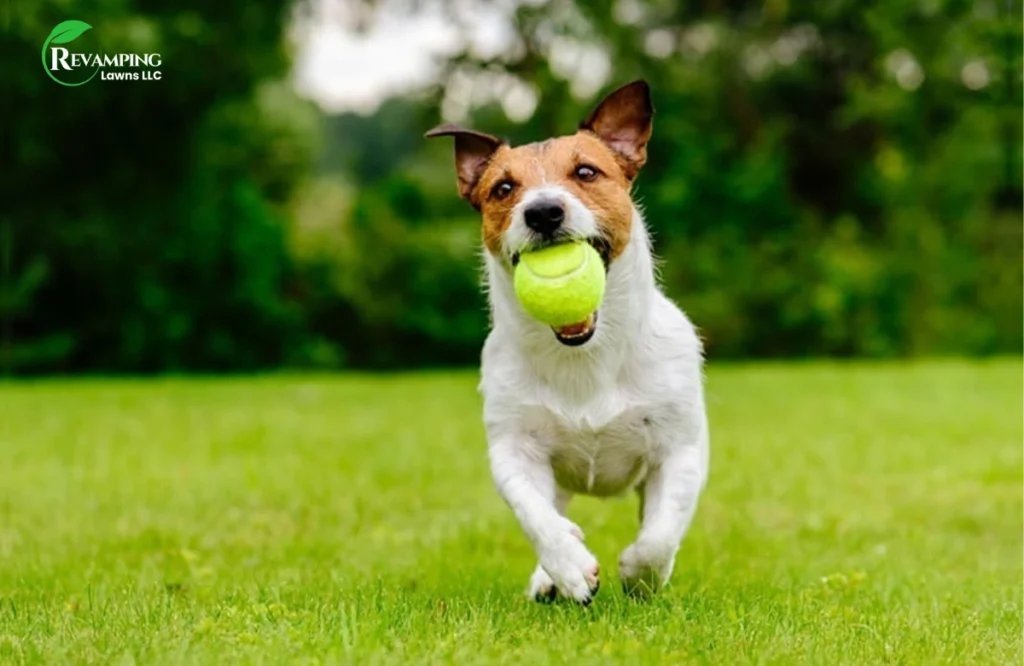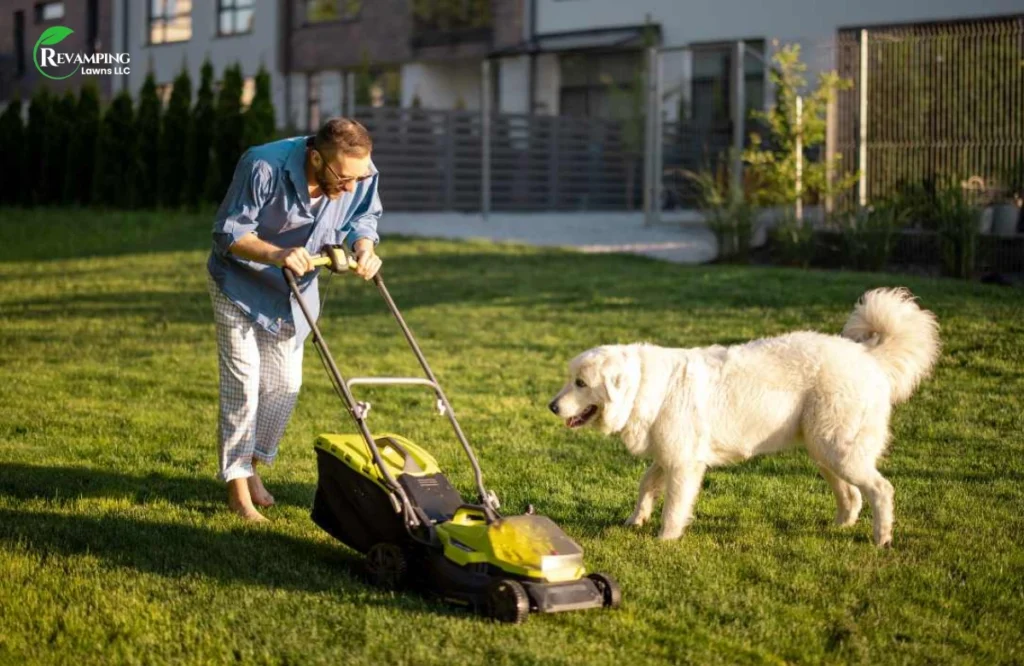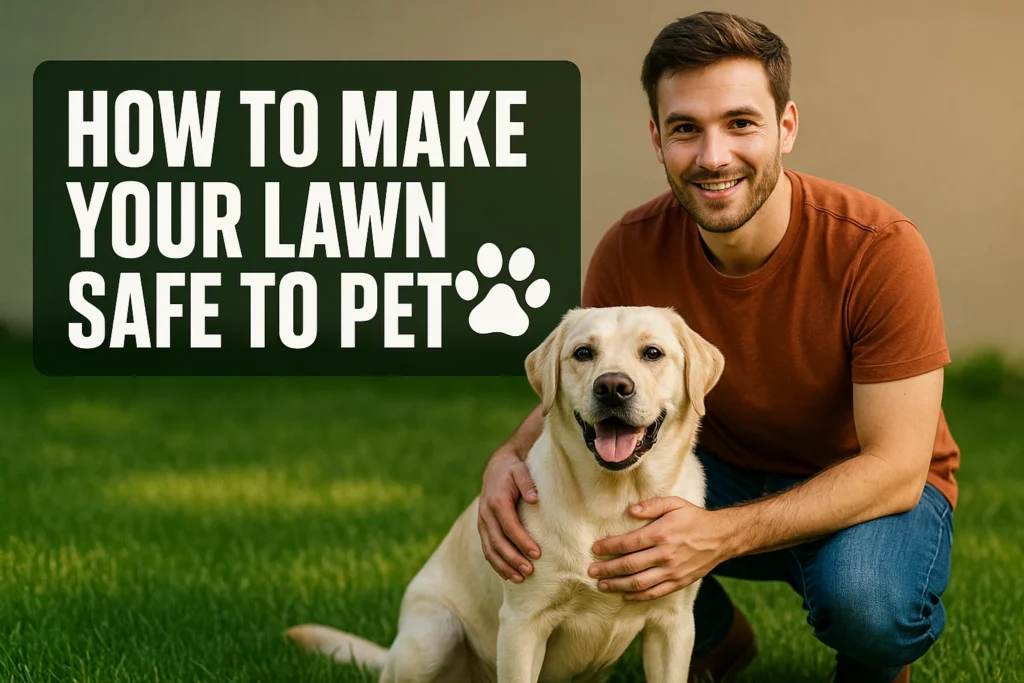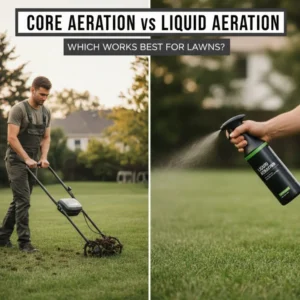Pets are family companions who enjoy their outdoor activities, and in particular, the yard. Although a grassy lawn is the ideal place to have your pets, it may be very dangerous at times, with such hazards as dangerous chemicals and even poisonous plants. Making smart decisions with your lawn care products, plants, and maintenance habits is a way of keeping your lawn safe with pets. This guide will provide easy and useful tips that can make you have a beautiful lawn that is safe to your pets.
Why You Need Pet-Safe Lawn Care
Protecting your lawn and keeping it pet-friendly is very vital to the health of your pets. A lot of conventional lawn care products such as chemical fertilisers, weed killers, and pesticides may be toxic or even deadly to pets when they are exposed to treated grass or they eat it.
Pet-safe lawn care refers to the application of natural and non-toxic products and practises that ensure that your pets are not affected by harmful chemicals. It is also a practise of keeping a clean, healthy lawn that will lessen pests and allergens but will not use harsh substances.
In addition, pet friendly lawn helps in conserving the environment through healthy soil, biodiversity, and minimised chemical run-off. It is a conscientious decision that helps your pets, family and your outside environment.
Organic vs. Synthetic Fertilizers
| Feature | Organic Fertilizers | Synthetic Fertilizers |
| Nutrient Release | Slow and steady | Fast and intense |
| Soil Health Impact | Builds healthy soil | Can harm soil microbes |
| Pet Safety | Safe and non-toxic | May be harmful to pets |
| Environmental Impact | Low pollution risk | Higher pollution risk |
Choosing the Right Fertilizer
To have a pet-safe lawn, organic fertilisers would be the most suitable as they do not release nutrients fast and enhance the health of the soil, as well as they do not provide a threat to pets. Artificial fertilisers offer immediate harvesting but they might also have dangerous chemicals that can pose some danger to pets and the nature. Always be observant to instructions on labels when applying any fertiliser, and stay off treated areas until safe of pets. Eating organic is not only healthier but also safer to your family and pets.
Dealing with Pet Damage on Lawns
Pets are a great addition to the family, and their active nature may at times leave your lawn ruined. Yep, pet activity can create both an eye sore on your grass, whether it is through digging or urine spots. The positive is that you can fix and even prevent pet damage and lawn maintain a healthy and beautiful lawn with two or three simple tricks and due care.
Common Types of Pet Damage
- Urine Burn Spots: Nitrogen of pet urine is concentrated and may burn grass leaving it yellow or brown.
- Digging: Pets particularly dogs can be found digging holes or troubled areas which destroy turf and soil.
- Wear and Tear: Soil compression may happen due to frequent running and playing that may cause wear in some places.

Repair Pet Damage on Your Lawn
Pets can sometimes cause harm your lawn and with appropriate measures, you can revive your grass to a healthy and lush colour. Here is an easy how-to guide to mending the damage that pets inflict:
Step 1: Remove Dead Grass
Clear dead or damaged grass in the affected area by use of a rake. This is a preparation of soil to grow again by exposing the bare soil.
Step 2: Wash off Harsh Chemicals.
Water down the area well to remove any remnants of nitrogen and salts that are in pet urine or waste, which is known to burn the lawn.
Step 3: Loosen the Soil
Rake, trowel or fork of the soil to loosen the surface. This forms a healthy foundation on which seed or sod can root and permits the air and water to reach the grass roots.
Step 4: Improve the Soil
Add a light layer of compost, topsoil or peat moss with fertiliser (low-nitrogen fertiliser is preferable) to add fertility and balance to the soil.
Step 5: Reseed or Patch
Toss grass seed that is meant to be used on your lawn or put layers of sod on the ground you have laid. Better durability is achieved by using pet resistant types of grass like fescue or Bermuda.
Step 6: Water Softly and regularly.
Water the newly seeded or patched area sparingly, but frequently–once or twice a day–keep the soil moist till the new grass reaches a height of about 2 inches.
Step 7: Protect the Area
Don’t allow pets and foot traffic in the area of the repairs before the grass has grown to prevent future damage. You may cover it with a light-protective covering that lets in the sunlight.
Creating a Pet-Friendly Lawn Environment
A pet-friendly lawn will entail designing and maintaining an exterior environment so that your pets are safe and comfortable. Here’s how to do it:

Select Pet-Safe Plants: Do not use plants that are toxic to pets like lilies, azaleas and daffodils. Rather, choose pet friendly plants and grasses that do well in your area.
Identify Play Areas: Establish shaded grassy areas where pets may play and rest without any danger. Such areas must be hardy and cleanable.
Use Safe Mulch: Choose animal friendly mulches like cedar or pine. Do not use cocoa mulch as this is poisonous to pets when consumed.
Offer Shade and Water: Have areas in the shade and fresh water so that the pets will be cool and hydrated particularly during hot weather.
Keep Areas Secured: Fence or guard sensitive plants or areas of the garden that may be unsafe of pets.
Keep the Lawn tidy: Trim the lawn, clear rubbish and clean up pet waste as much as possible to minimise pests and allergens.
Conclusion
Lawn care practises, products and timely repairs are important in ensuring that your lawn stays healthy and safe to pets. You can have a beautiful lawn without putting the health of your pet at risk by using pet-safe fertilisers, building pet-friendly play areas, and repairing damage promptly. To get professional assistance in turning your lawn into a beautiful and secure place, rely on Revamping Lawn LLC. We have a professional staff that focuses on environmentally friendly and pet-safe lawn care products tailored to your needs. Call today to have your lawn taken care of and at the same time keep your furry family members safe.
FAQs
Pet-safe products minimise the possibility of poisoning, skin irritation, and allergic reaction by your pets.
Wet down urine spots promptly and train pets to use designated spots
Yes, digging may leave bare areas; training and special playgrounds can stop this.
Permanent grasses such as fescue, Bermuda and Kentucky bluegrasses are good in pet traffic.
Take product instructions but do not expose pets until product is dry or absorbed.
Frequent mowing (typically once a week in growth seasons) is beneficial in ensuring that grass is healthy and not likely to be damaged.



